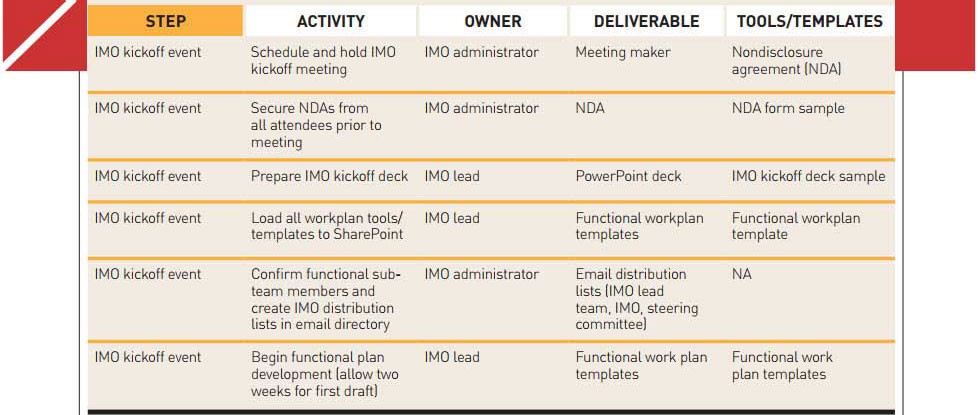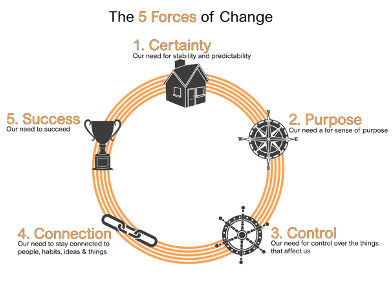How to Successfully Integrate Mergers and Acquisitions
Follow these step-by-step instructions to successfully plan, optimise, and integrate mergers and acquisitions.
By GPMIP Partner, Scott Whitaker
This article can also be found in the February 2018 issue of FM Financial Magazine
Most mergers, acquisitions, and takeovers fail to increase shareholder value by the time the deal is done. Reasons include financial mistakes, such as overvaluing the M&A target, and legal shortcomings, such as insufficient due diligence. But even when legal and financial arrangements are done well, integrating two businesses with two cultures can be a challenge.
Integration playbooks are part of a sound M&A strategy for any organisation, but most are simply collections of templates and artefacts from previous deals. Some steps and outputs may be documented, but they are often out of sequence and confusing to anyone trying to leverage the playbook to inform their integration planning.
Remember the Purpose
A comprehensive playbook should:
- Outline a structured approach that helps two corporate cultures work together and learn from each other.
- Ensure consistency and standardisation across integration teams.
- Provide proven processes and tools/templates to break down a complex activity into defined phases, steps, and deliverables and maximise efficiency.
- Provide flexibility to accommodate varying transaction sizes and levels of complexity.
- Make knowledge transfer easy.
- Provide an intuitive platform for training.
Focus on Basics
Good playbooks aren’t overly engineered. Focus on basic needs first, and layer in complexity as needed.
Well-designed playbooks can help:
- Connect corporate development processes to integration planning processes.
- Specify who needs to be involved and when.
- Anticipate and document key decisions that need to be made in each phase.
- Document anticipated risks and issues requiring action.
- Provide parameters to ensure day one readiness.
- Outline processes and steps for unique M&A scenarios (eg, carveouts).
- Provide clear rules of engagement and protocols for managing sensitive information.
Driving Adoption
The key to a successful implementation of a playbook is adoption. Leaders need to see the value immediately and embrace the process.
Key steps here include:
- Connect the playbook’s value and benefits directly to helping achieve the integration objectives.
- Highlight how using the playbook can increase efficiency.
- Design a robust training and knowledge transfer plan to facilitate implementation.
Ongoing Optimisation
Don’t let your playbook become static. Playbooks are living articulations of a defined process and need to be updated and optimised near the conclusion of your integration. Key steps here include:
- Creating an internal site to share the corporate playbook.
- Conducting after-action interviews with integration team members to collect feedback that can be used to optimise playbook steps, deliverables, tools, and templates.
- Making sure the site to share the playbook includes all of the tools, templates, and work product samples so they can be accessed by new teams when needed. Avoid re-creating the wheel for each integration.
Playbooks should be flexible and adaptable for specific requirements, such as:
- Applicable to all acquisition scenarios (eg, the playbook must be flexible so it can be used for small “bolt-on” acquisitions that may require only back-office integration, as well as full integrations where all functions, systems, people, etc. are being combined and integrated).
- Deployable across multiple concurrent transactions and geographies.
- Able to select and/or deselect the specific process steps and supporting tools/templates they need based on the size and complexity of their transaction (ie, not all playbook process steps may be required for certain transactions).
Comprehensive Playbook Solutions
A dynamic playbook covers integration planning and execution process, tools and templates, programme management support, and training.
- Process documentation: Articulates all process phases, steps, deliverables, and other process details. This can also be housed in an online tool.
- Supporting tool and template library: An online repository of all tools, templates, and sample artefacts from previous integrations that can be repurposed by new team members.
- Online portal: Official “home” of the playbook and generally used to facilitate overall programme management.
- Training: New integration teams and/or team members should be trained on the playbook methodology to facilitate internal knowledge transfer and application.
Playbook Contents
The playbook should contain all the materials, scenarios, tools, to-do lists, and contact information for people involved in a planned M&A.
Playbook overview:
Essentially the “user’s guide” for playbook application with details on purpose, use, activation steps, contents, administration details, training, and links to all materials, which are typically shared on an internal site.
Glossary:
M&A and integrations generate a lot of terms and acronyms. Don’t assume everyone knows what they mean. To assist with training and general convenience, we always include a glossary of terms and explanations of key playbook elements.
Diligence priorities:
This section includes key data requirements to inform integration planning (not to be confused with pre-deal financial due diligence). This section includes data necessary to develop detailed integration plans for corporate functions such as human resources, information technology, sales and marketing, etc.
Phasing:
The playbook includes detailed phase modules covering pre-close through end state for the most typical integration scenarios. Five-phase outlines are the most common:
- Pre-deal: Phase when potential target(s) are in discussions with corporate development and a deal is activated (the likelihood of a deal is greater than 50%, and a letter of intent and/or purchase agreement are active).
- Integration planning: The integration planning phase is when the bulk of the preparation required to fully engage and mobilise an integration management office (IMO) is completed.
- IMO mobilisation: The mobilisation phase is where the extended functional leads are engaged and the comprehensive integration and day plans are developed.
- Execution: The execution phase encompasses delivery of activities that have been pre-planned and mobilised, and includes monitoring and controlling activities driven by the IMO.
- Optimisation and close: The optimisation and close phase provides input to execute the integration and to complete all administration tasks at the end of the integration project.
Involvement by phase:
This section details who needs to be involved at each stage to prevent:
- Engaging people too early before there is meaningful work to do.
- Overstaffing. (Understand that people generally want to be part of the integration team but don’t always need to be. Most people need to be focused on the day-to-day business, so making clear lines here is important.)
Considerations
Include best practice tips to help facilitate knowledge transfer and to assist with training. Include common “watch outs” and lessons learned to help navigate the nuances of sound integration management and execution.
IMO Mobilisation
Description: The mobilisation phase is where the extended functional leads are engaged and the comprehensive integration and day one plans are developed.
Objectives: Engage the extended IMO team and provide all required direction, guidance, and IMO processes to initiate and manage the integration and day one plan development.
Personnel:
- IMO lead team
- Functional integration leads
- Target integration lead(s)
- IMO administrative support
- Business unit leadership (as needed)
- Corporate IMO (as needed)
Key decisions:
- Communications materials
- Target inclusion in weekly process
Timing and duration: Allow minimum of 30 days to complete all mobilisation phase deliverables.
Considerations
- Make sure there is some continuity between the pre-deal team and the integration team (eg, 1–3 people who were involved in due diligence are also supporting the integration).
- Confirm any unique scenarios (eg, earnouts) and make sure the lead team is clear on what can and cannot be integrated.
- Make sure IMO lead team members have clearly defined roles and responsibilities.
- Reinforce “information gathering” objectives v. “information sharing” with the target (IMO is in a data-gathering mode, and it’s premature to share integration planning information with the target).
- Check to make sure contracts have been translated into English.
- Make sure data-harvesting process and requests do not overwhelm the target.
- Validate planning assumptions with team leads and the executive steering committee.
Step-by-Step Detail
Below is a partial snapshot of the IMO mobilisation phase. This section of the playbook is the most detailed, prescriptive, and customised with dozens of steps.

Sample Tool and Template Library
The average integration will produce dozens, if not hundreds, of templates and tools that can be stored on a shared site. Examples include:
| Governance model(s) and process | Integration resourcing model(s) | Scorecards and measurements |
| IMO roles and responsibilities | Functional workplans | End-state process tracking |
| IMO building blocks | Risk assessment | Communication plan/matrices |
| Integration strategy and objectives | Talent assessment worksheets | Issues/risk logs |
| IMO weekly meeting structure/agenda | Cultural and change assessments | Tool usage guidelines |
| Integration dashboards | Onboarding process/materials | Escalation protocols |
| Functional status reporting templates | IMO kickoff agendas/decks | Cross-functional dependency mapping |
| Pre-close legal guidelines | Synergy identification and tracking | Employee communication plans |
| IMO and team charters | Strategic framework | Divestiture/transition service agreement planning templates |
| Discovery process and checklists | Day one framework planning | Day one/week one planners |
| Functional organisation models | Talent assessment process | After-action reviews (lessons learned) |
| Due diligence to integration process flows | First 30/90 templates | Employee surveys |
| Data-harvesting process/templates | Retention planning worksheets | Workstream prioritisation matrices |
| IMO calendar | Day one checklists | Scope change requests |
| Playbook scope/usage | Transaction scenario matrix | |
| Phasing constructs | IMO budgeting | |
| Guiding principles | Training and orientation | |
| Integration leader requirements | Tool evaluation criteria |
About Global PMI Partners
Global PMI Partners is the only global consultancy firm focused exclusively on merger integration and carve-out services. With offices across the US, Europe and Asia, Global PMI supports both private equity as well as corporate acquirers.













